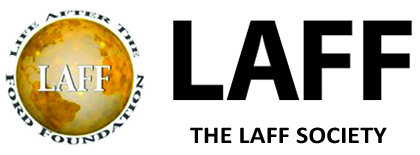CLIPPINGS
|
Norman Ernest Borlaug (March 25, 1914 – September 12, 2009)
From the RNA Underworld September 14, 2009 by Arthur Hunt Norman Borlaug passed away yesterday. Dr. Borlaug was the key contributor to the so-called Green Revolution, that brought great food security to countries such as Mexico, Pakistan, and India. He was a clever and innovative plant breeder and a great champion for the use of high-yielding crop varieties in agriculture. He was also an outspoken proponent of biotechnology. As he stated in this short interview: “I have devoted my life to the global challenge of providing adequate food production for a growing world population. Forty years ago, a Green Revolution was started using improved seed and fertilizer, helping dramatically increase the harvest while sparing forest and natural areas from the plow. It took both the scientific advances and the changes in economic policies by leaders to allow for the adoption of the Green Revolution technologies by millions of hungry farmers. Over the past decade, we have been witnessing the success of plant biotechnology. This technology is helping farmers throughout the world produce higher yield, while reducing pesticide use and soil erosion. The benefits and safety of biotechnology has been proven over the past decade in countries with more than half of the world's population. What we need is courage by the leaders of those countries where farmers still have no choice but to use older and less effective methods. The Green Revolution and now plant biotechnology are helping meet the growing demand for food production, while preserving our environment for future generations.” From his foreword to “The Frankenfood Myth: How Protest and Politics Threaten the Biotech Revolution” by Henry Miller and Greg Conko (Praeger Publishers, 2004): “As a plant pathologist and breeder, I have seen how the skeptics and critics of the new biotechnology wish to postpone the release of improved crop varieties in the hope that another year's, or another decade's, worth of testing will offer more data, more familiarity, more comfort. But more than a half-century in the agricultural sciences has convinced me that we should use the best that is at hand, while recognizing its imperfections and limitations. Far more often than not, this philosophy has worked, in spite of constant pessimism and scare-mongering by critics. I am reminded of our using the technology at hand to defeat the specter of famine in India and Pakistan in the 1950s and early 1960s. Most “experts” thought that mass starvation was inevitable, and environmentalists like Stanford's Paul Ehrlich predicted that hundreds of millions would die in Africa and Asia within just a few years “in spite of any crash programs embarked upon.” The funders of our work were cautioned against wasting resources on a problem that was insoluble. Nevertheless, in 1963, the Rockefeller Foundation and the Mexican government formed the International Maize and Wheat Improvement Center (known by its Spanish acronym CIMMYT) and sent my team to South Asia to teach local farmers how to cultivate high-yield wheat varieties. As a result, Pakistan became self sufficient in wheat production by 1968 and India a few years later. As we created what became known as the “Green Revolution,” we confronted bureaucratic chaos, resistance from local seed breeders, and centuries of farmers' customs, habits, and superstitions. We surmounted these difficult obstacles because something new had to be done. Who knows how many would have starved if we had delayed commercializing the new high-yielding cereal varieties and improved crop management practices until we could perform tests to rule out every hypothetical problem, and test for vulnerability to every conceivable type of disease and pest? How much land for nature and wildlife habitat, and topsoil would have been lost if the more traditional, lowyield practices had not been supplanted? At the time, Forrest Frank Hill, a Ford Foundation vice president, told me, “Enjoy this now, because nothing like it will ever happen to you again. Eventually the naysayers and the bureaucrats will choke you to death, and you won't be able to get permission for more of these efforts.” Hill was right. His prediction anticipated the gene-splicing era that would arrive decades later. As Henry Miller and Gregory Conko describe in this volume, the naysayers and bureaucrats have now come into their own. If our new varieties had been subjected to the kinds of regulatory strictures and requirements that are being inflicted upon the new biotechnology, they would never have become available.” Dr. Borlaug had been suggested at times to be the greatest living American. Given the scope of his accomplishments, it's hard to argue with this. |
DISCLAIMER: The views expressed in these pages are the views of the authors and do not necessarily reflect the views of the LAFF Society.

